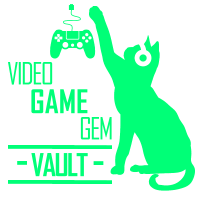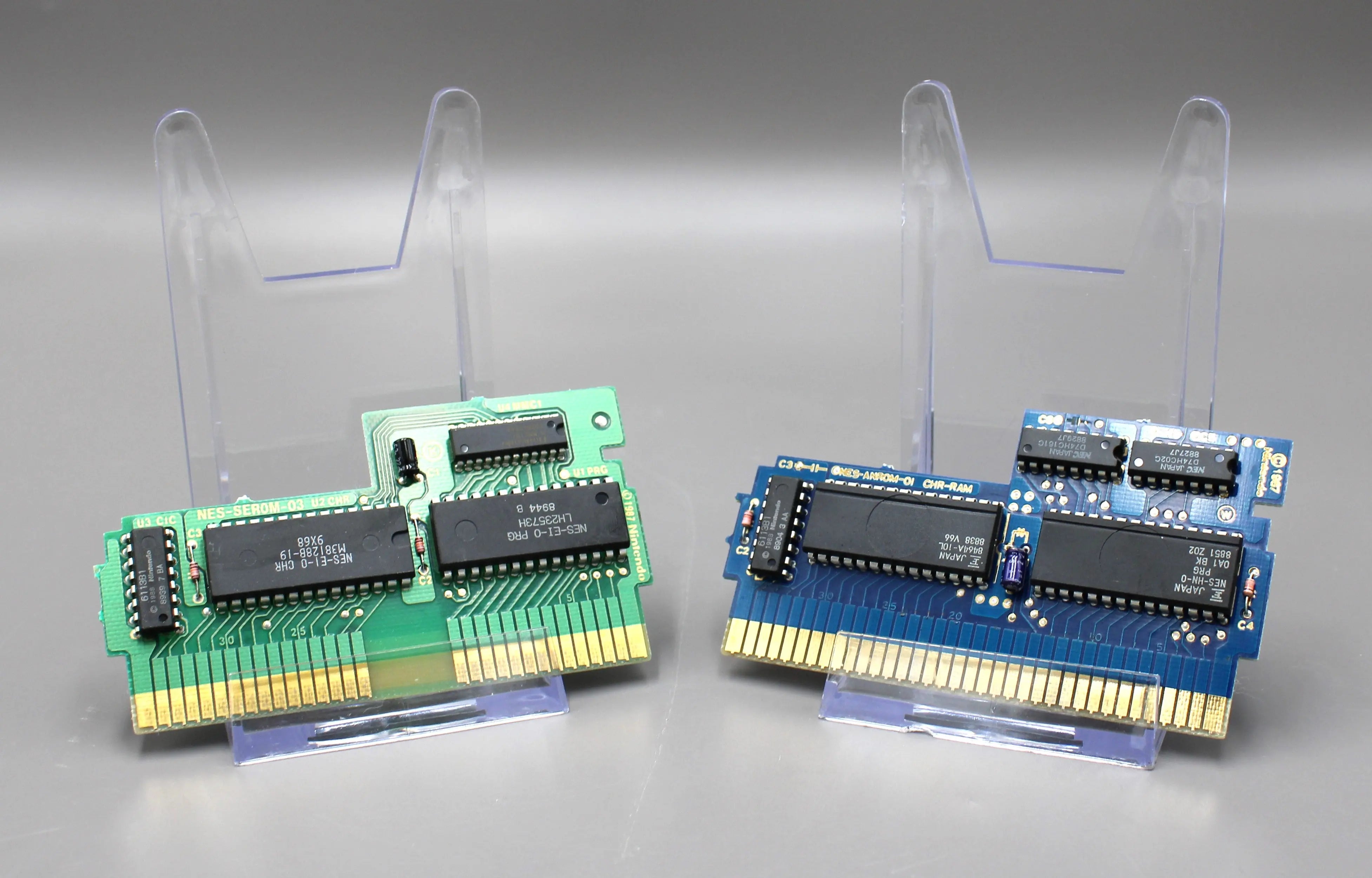The Colors of Nostalgia: Why are Some NES Game Boards Blue and Others are Green?
The Nintendo Entertainment System (NES) is a beloved gaming console that has left an indelible mark on the history of video games. One of the quirks that collectors and enthusiasts often notice is the difference in color between NES game boards: some are blue, while others are green. While the majority of the boards are green when you pop open that game cartridge, you will notice sometimes that the board is blue. Does this make it a fake?! Not necessarily, this distinction has intrigued many, leading to questions about the reasons behind it and how to determine the authenticity of a game based just on its board.

Why Are NES Game Boards Different Colors?
- Manufacturing Variations: The color difference between blue and green NES game boards primarily stems from the manufacturing processes used by Nintendo and its third-party developers. Early NES cartridges utilized green circuit boards, but as production scaled up, Nintendo began to employ blue boards for some later releases. The switch in color likely reflected changes in material sourcing or production efficiency, but we are not entirely certain.
- Type of Games: The color of the board can also indicate whether the cartridge is a first-party or third-party product. First-party (In the video game industry, a first-party developer is a studio that creates games exclusively for the company that makes the console) games meaning that it was typically featured the green boards, while many third-party games utilized blue boards. This distinction helped Nintendo maintain a level of quality control over their licensed products.
- Regional Variations: Some variations in board color can also be attributed to different regional releases. Games released in different markets sometimes had slight alterations in their manufacturing processes, leading to differences in board color.
See below for a photograph of an authentic "blue" NES board:

See below for a photograph of an authentic "green" NES board:

Identifying Authentic NES Games
When evaluating the authenticity of an NES game based on its board color, there are several indicators to look for:
- Board Color: As mentioned, first-party games generally have green boards, while many third-party games are blue. However, this is not a strict rule, so further checks are necessary. So, beware if you get a pink board!
- Solder Points: Authentic NES boards usually have specific patterns of solder points. Counterfeit boards may have different solder configurations or less consistent soldering quality.
- Silkscreening: Check for the silkscreened text on the board. Genuine NES boards will have clear, consistent printing, while fakes might exhibit smudged or poorly printed labels.
- Chip Identification: NES game boards contain specific chips that can help verify authenticity. Use a chip identification tool or cross-reference the chip numbers with known genuine configurations.
- Physical Quality: Authentic boards tend to have a more robust feel and better craftsmanship than counterfeit versions. Check for overall build quality, including the thickness of the board and the quality of the cartridge shell.
- Weight: Counterfeit games are often lighter due to the use of inferior materials. If a game feels unusually light, it might be worth investigating further.
The blue and green colors of NES game boards are more than just aesthetic choices; they reflect the complex history of video game manufacturing and the evolution of the NES itself. For collectors and fans, understanding these differences not only adds depth to their appreciation of the games but also aids in identifying authentic titles from potential fakes. As the NES continues to captivate new generations, these small details remind us of the enduring legacy of one of gaming's most iconic systems.
~Leave us a comment, we'd love to hear your thoughts!~
Happy Gaming! - Lauren
Video Game Gem Vault
1231 E. Michigan Ave
East Lansing, MI 48823
Phone: 269-213-5006 (Call or Text)
Email: play@videogamegemvault.com
Website: Videogamegemvault.com



